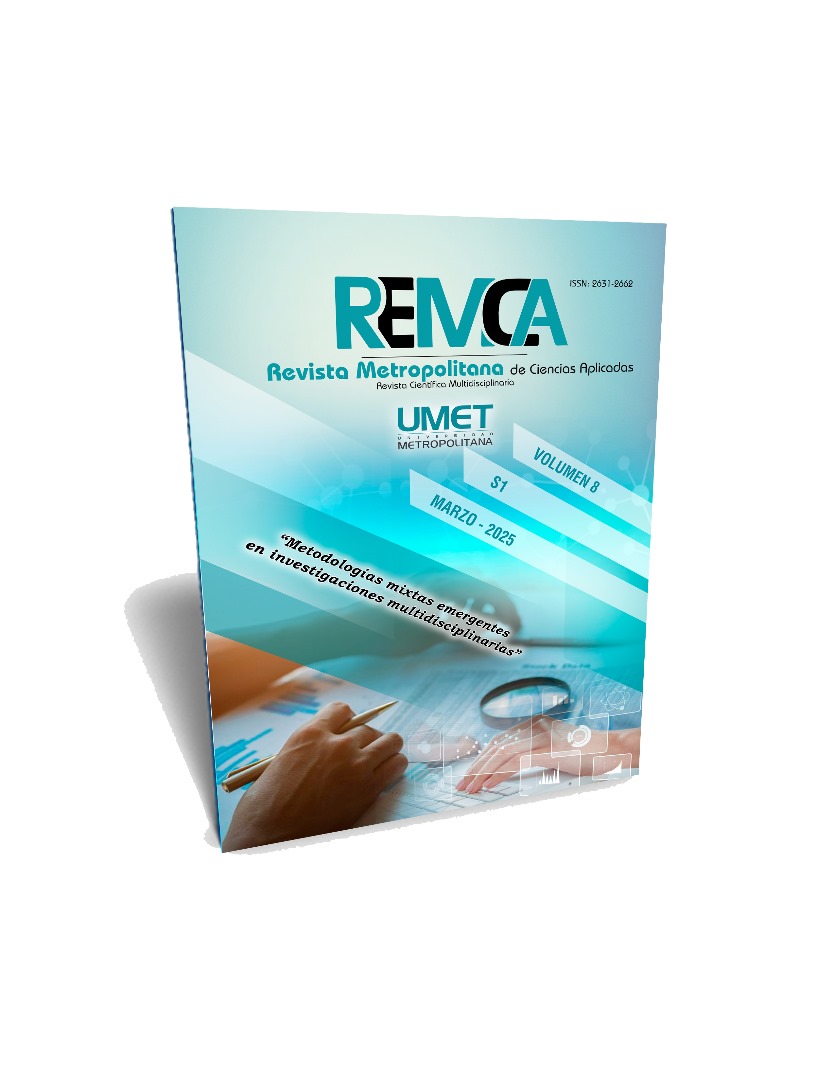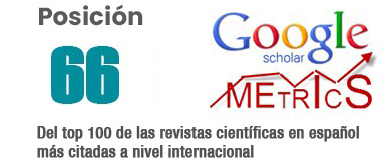Clinical manifestations, diagnosis and surgical treatment of an intestinal complication in a patient with inflammatory disease
DOI:
https://doi.org/10.62452/055s4015Keywords:
Intestinal complications, differential diagnosis, digestive surgery, transmural inflammation, intestinal stenosis, multidisciplinary managementAbstract
Blind colonic fistula is a rare intestinal complication of Crohn’s disease, characterized by the formation of fistulous tracts without visible external communication. Its diagnosis poses a clinical challenge due to the absence of specific signs and its similarity to other abdominal pathologies. A case study was conducted based on the clinical, imaging, and histopathological evaluation of a patient with a blind colonic fistula secondary to Crohn’s disease. Additionally, a systematic review was carried out in indexed biomedical databases (2018-2024), selecting relevant articles on the diagnosis and treatment of this condition. The results revealed that in the analyzed clinical case, the patient presented with chronic abdominal pain and partial intestinal obstruction. Imaging studies using a contrast enema revealed stenosis at the intestinal anastomosis and the presence of a blind fistula. Histopathological analysis confirmed transmural inflammation with the formation of non-caseating granulomas and fibroblastic proliferation. The patient underwent surgery, with a favorable postoperative outcome. It was concluded that blind colonic fistula should be considered in patients with Crohn’s disease and symptoms of intestinal obstruction with no apparent cause. Timely diagnosis through imaging techniques and histopathological studies is essential to guide treatment. Surgical intervention may be necessary in advanced cases, highlighting the importance of a multidisciplinary approach in managing these complications.
Downloads
References
Adegbola, S. O., Dibley, L., Sahnan, K., Wade, T., Verjee, A., Sawyer, R., & Hart, A. L. (2020). Burden of disease and adaptation to life in patients with Crohn’s perianal fistula: a qualitative exploration. Health and Quality of Life Outcomes, 18, 1-13. https://link.springer.com/article/10.1186/s12955-020-01622-7
Andrés Moreno, A., Ponce Dorrego, M., Jiménez Gómez, J., Gómez Cervantes, M., Vilanova Sánchez, A., López Gutiérrez, J., & López Santamaría, M. (2021). Combined treatment of enterocutaneous fistula with laser diode and embolization. Cir Pediatr, 34, 43-46. https://www.secipe.org/coldata/upload/revista/2021_34-1_43.pdf
Biemans, V. B., Van der Meulen-de Jong, A. E., Van Der Woude, C. J., Löwenberg, M., Dijkstra, G., Oldenburg, B., & Hoentjen, F. (2020). Ustekinumab for Crohn’s disease: results of the ICC registry, a nationwide prospective observational cohort study. Journal of Crohn's and Colitis, 14(1), 33-45. https://doi.org/10.1093/ecco-jcc/jjz119
Brochard, C., Rabilloud, M. L., Hamonic, S., Bajeux, E., Pagenault, M., Dabadie, A., & Seyrig, J. A. (2022). Natural history of perianal Crohn's disease: Long-term follow-up of a population-based cohort. Clinical Gastroenterology and Hepatology, 20(2). https://www.sciencedirect.com/science/article/pii/S1542356520317201
Chapuis-Biron, C., Kirchgesner, J., Pariente, B., Bouhnik, Y., Amiot, A., Viennot, S., & GETAID BioLAP Study Group. (2020). Ustekinumab for perianal Crohn's disease: the BioLAP multicenter study from the GETAID. Official journal of the American College of Gastroenterology| ACG, 115(11), 1812-1820. https://journals.lww.com/ajg/fulltext/2020/11000/ustekinumab_for_perianal_crohn_s_disease__the.16.aspx
De Gregorio, M., Lee, T., Krishnaprasad, K., Amos, G., An, Y. K., Bastian-Jordan, M., & Ding, N. S. (2022). Higher anti-tumor necrosis factor-α levels correlate with improved radiologic outcomes in Crohn’s perianal fistulas. Clinical Gastroenterology and Hepatology, 20(6), 1306-1314. https://www.sciencedirect.com/science/article/pii/S154235652100865X
Feuerstein, J. D., Ho, E. Y., Shmidt, E., Singh, H., Falck-Ytter, Y., Sultan, S., & Weiss, J. M. (2021). AGA clinical practice guidelines on the medical management of moderate to severe luminal and perianal fistulizing Crohn’s disease. Gastroenterology, 160(7), 2496-2508. https://doi.org/10.1053/j.gastro.2021.04.022
Gklavas, A., Sotirova, I., Karageorgou, M., Kozonis, T., Poulaki, A., & Papaconstantinou, I. (2021). Is the Quality of Life of Patients with Fistulizing Perianal Crohn’s Disease Impaired by the Presence of Chronic Loose, Non-cutting Seton? Journal of Gastrointestinal Surgery, 25(10), 2686-2689. https://www.sciencedirect.com/science/article/pii/S1091255X23008028
Hu, A., Kotze, P. G., Burgevin, A., Tan, W., Jess, A., Li, P. S., & Ananthakrishnan, A. N. (2021). Combination therapy does not improve rate of clinical or endoscopic remission in patients with inflammatory bowel diseases treated with vedolizumab or ustekinumab. Clinical Gastroenterology and Hepatology, 19(7), 1366-1376. https://doi.org/10.1016/j.cgh.2020.07.012
Malian, A., Rivière, P., Bouchard, D., Pigot, F., Eléouet-Kaplan, M., Favreau-Weltzer, C., & Laharie, D. (2020). Predictors of perianal fistula relapse in Crohn’s disease. Inflammatory Bowel Diseases, 26(6), 926-931. https://doi.org/10.1093/ibd/izz200
McGregor, C. G., Tandon, R., & Simmons, A. (2023). Pathogenesis of fistulating Crohn’s disease: a review. Cellular and molecular gastroenterology and hepatology, 15(1), 1-11. https://doi.org/10.1016/j.jcmgh.2022.09.011
Ríos, P., Güell Bara, A., Serra, M. M., Nova, D. E., Gordillo, K. J., Ponce, R. J., Eva, E., & De Lama , M. E. (2022). Complicaciones intestinales de la enfermedad de Crohn. Hallazgos radiológicos. Seram, 1(1). https://piper.espacio-seram.com/index.php/seram/article/view/8623
Singh, S., Murad, M. H., Fumery, M., Sedano, R., Jairath, V., Panaccione, R., & Ma, C. (2021). Comparative efficacy and safety of biologic therapies for moderate-to-severe Crohn's disease: a systematic review and network meta-analysis. The Lancet Gastroenterology & Hepatology, 6(12), 1002-1014. https://doi.org/10.1016/S2468-1253(21)00312-5
Tjandra, D., Garg, M., Behrenbruch, C., McCormick, J., Simkin, P., Prentice, R., & Christensen, B. (2021). investigation and management of internal fistulae in Crohn’s disease. Alimentary Pharmacology & Therapeutics, 53(10), 1064-1079. https://onlinelibrary.wiley.com/doi/abs/10.1111/apt.16326
Tsai, L., McCurdy, J. D., Ma, C., Jairath, V., & Singh, S. (2022). Epidemiology and natural history of perianal Crohn’s disease: a systematic review and meta-analysis of population-based cohorts. Inflammatory Bowel Diseases, 28(10), 1477-1484. https://pubmed.ncbi.nlm.nih.gov/34792604/
Tuma, F., Crespi, Z., Wolff, C. J., Daniel, D. T., & Nassar, A. K. (2020). Enterocutaneous fistula: a simplified clinical approach. Cureus, 12(4). https://assets.cureus.com/uploads/review_article/pdf/30483/1612430103-1612430098-20210204-18268-yjgrfi.pdf
Vásquez de la Bandera Gonzenbach, P. D., Siguencia Muñoz, J. M., Acosta Mayorga, C. G., & Perez Quiroga, F. D. (2023). Enfermedad de Crohn Perianal Fistulizante. Reporte de caso clínico y Revisión bibliográfica. Revista UNIANDES De Ciencias De La Salud, 6(3), 1414–1424. https://doi.org/10.61154/rucs.v6i3.2740
Downloads
Published
Issue
Section
License
Copyright (c) 2025 Guido Nino Guida-Acevedo, Rafael Martín Franco-Delgado, Leonardo Alejandro Bustamante-Coello, Roberto Javier Aguilar-Berrezueta (Autor/a)

This work is licensed under a Creative Commons Attribution-NonCommercial-ShareAlike 4.0 International License.
Authors who publish in Revista Metropolitana de Ciencias Aplicadas (REMCA), agree to the following terms:
1. Copyright
Authors retain unrestricted copyright to their work. Authors grant the journal the right of first publication. To this end, they assign the journal non-exclusive exploitation rights (reproduction, distribution, public communication, and transformation). Authors may enter into additional agreements for the non-exclusive distribution of the version of the work published in the journal, provided that acknowledgment of its initial publication in this journal is given.
© The authors.
2. License
The articles are published in the journal under the Creative Commons Attribution-NonCommercial-ShareAlike 4.0 International License (CC BY-NC-SA 4.0). The terms can be found at: https://creativecommons.org/licenses/by-nc-sa/4.0/deed.en
This license allows:
- Sharing: Copying and redistributing the material in any medium or format.
- Adapting: Remixing, transforming, and building upon the material.
Under the following terms:
- Attribution: You must give appropriate credit, provide a link to the license, and indicate if any changes were made. You may do this in any reasonable manner, but not in any way that suggests the licensor endorses or sponsors your use.
- NonCommercial: You may not use the material for commercial purposes.
- ShareAlike: If you remix, transform, or build upon the material, you must distribute your creation under the same license as the original work.
There are no additional restrictions. You may not apply legal terms or technological measures that legally restrict others from doing anything the license permits.




